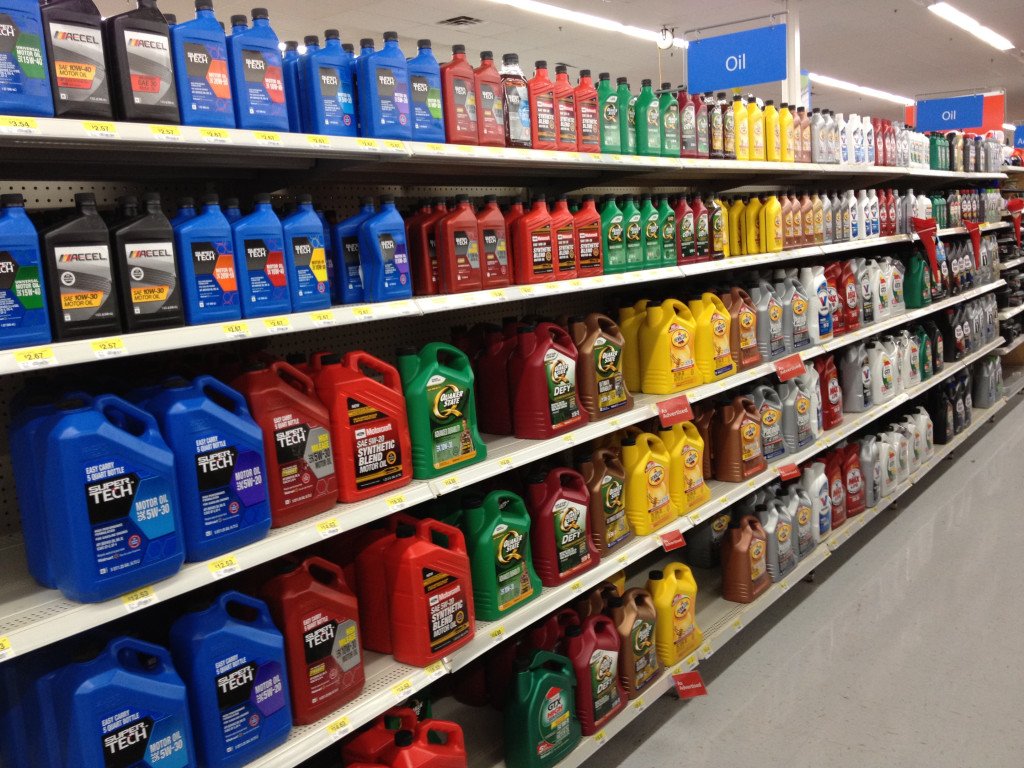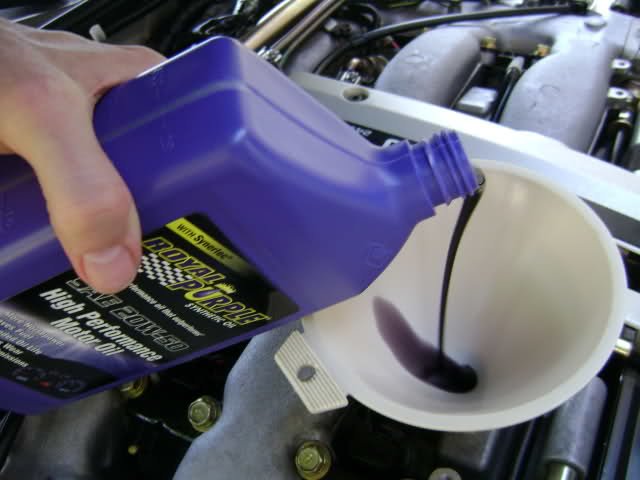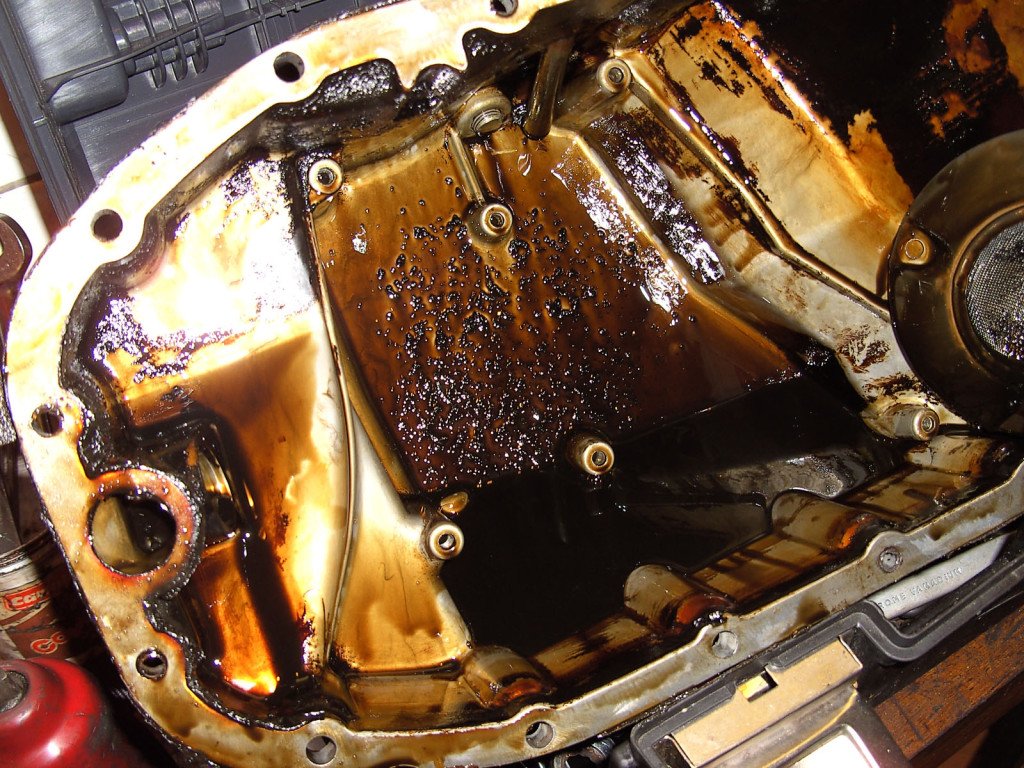 When in polite company, etiquette dictates there are two things you should never discuss: politics and religion. When mingling with motorcycle enthusiasts I believe there are two other things you should never discuss: tires and engine oil. Nothing racks up forum pages quicker than someone claiming to use the best tire or the best oil – debates disintegrate into rants and personal attacks and moderators reach for the Advil.
Opinions on tires can easily be dismissed as subjective because of the numerous variables involved. Bike displacement and weight, rider skill level and riding style, terrain and weather conditions all have an impact on performance.
However, even with the numerous variables that affect motorcycle engine oil, it can proven to effective or ineffective through a scientific technique called analysis. I know, that word has a lot of syllables – four to be exact, which exceeds my maximum allowable limit by two.
When in polite company, etiquette dictates there are two things you should never discuss: politics and religion. When mingling with motorcycle enthusiasts I believe there are two other things you should never discuss: tires and engine oil. Nothing racks up forum pages quicker than someone claiming to use the best tire or the best oil – debates disintegrate into rants and personal attacks and moderators reach for the Advil.
Opinions on tires can easily be dismissed as subjective because of the numerous variables involved. Bike displacement and weight, rider skill level and riding style, terrain and weather conditions all have an impact on performance.
However, even with the numerous variables that affect motorcycle engine oil, it can proven to effective or ineffective through a scientific technique called analysis. I know, that word has a lot of syllables – four to be exact, which exceeds my maximum allowable limit by two.
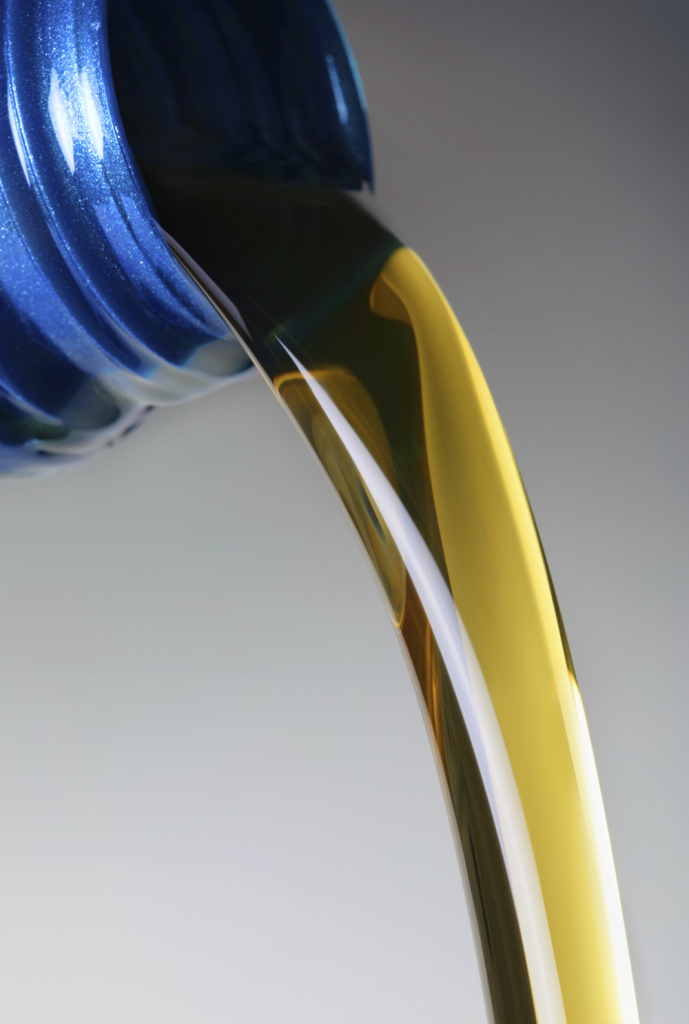 Used oil analysis can be (and usually is) done independently and provides insight not only on how an oil is performing but also the overall general health of the engine itself. It does this by using a Spectrograph to identify and gauge contaminants in the oil such as wear metals, fuel dilution, and chunks of third gear. This is the only real true test to compare the way oils are performing. But since this has to be done after the oil has been used, it begs the question How do you begin to judge an oil before you buy it?
In part, this is done by comparing specifications, which has five syllables and is hard for me to pronounce. Specifications will help get you pointed in the right direction – but not much else.
But before we go any further into analysis or specifications it’s important to understand how oil is made. So grab some Advil, pull up a soap box, and hang on as I attempt to delve into the Motorcycle Engine Oil Argument.
My fundamental understanding of where oil comes from was taught to me at an early age. Crude oil, also known as Black Gold or Texas Tea, comes from the back yard of a Tennessee hillbilly named Jed Clampett – who now resides in a suburb of Los Angeles.
When crude oil comes out of the ground its loaded with hydrocarbon molecules in numerous sizes. Small molecules containing fewer carbons in their structure are used for fuel; large and heavy molecules are used for lubricating oils. All this is sorted out in a process known as refining. Let’s take an in-depth look at the refining process, shall we?
First the crude oil is desalted, then sent through a furnace where it is heated and partially vaporized. Next, it is sent to a fractionating column. This column operates slightly above atmospheric pressure and separates the hydrocarbons based on their boiling points, which are directly affected by their molecular size. In the fractionating column, heat is applied and zzzzzzzzzzzzzzzzzzzzzzzzzzzzzzzzzzzzzzzzzzzzzzzzzzz Oops, sorry! I fell asleep. Let’s summarize the refining process, shall we?
Through refinement each barrel of crude oil is separated into several end groups, which are then further refined for their prospective products. The largest portion of a barrel of crude oil becomes fuel. A significantly smaller percentage of each barrel becomes other products such as road and asphalt oil, other distillates, and hair styling gel that’s exported to New Jersey. Oil used for lubrication makes up the smallest percentage of each barrel.
Used oil analysis can be (and usually is) done independently and provides insight not only on how an oil is performing but also the overall general health of the engine itself. It does this by using a Spectrograph to identify and gauge contaminants in the oil such as wear metals, fuel dilution, and chunks of third gear. This is the only real true test to compare the way oils are performing. But since this has to be done after the oil has been used, it begs the question How do you begin to judge an oil before you buy it?
In part, this is done by comparing specifications, which has five syllables and is hard for me to pronounce. Specifications will help get you pointed in the right direction – but not much else.
But before we go any further into analysis or specifications it’s important to understand how oil is made. So grab some Advil, pull up a soap box, and hang on as I attempt to delve into the Motorcycle Engine Oil Argument.
My fundamental understanding of where oil comes from was taught to me at an early age. Crude oil, also known as Black Gold or Texas Tea, comes from the back yard of a Tennessee hillbilly named Jed Clampett – who now resides in a suburb of Los Angeles.
When crude oil comes out of the ground its loaded with hydrocarbon molecules in numerous sizes. Small molecules containing fewer carbons in their structure are used for fuel; large and heavy molecules are used for lubricating oils. All this is sorted out in a process known as refining. Let’s take an in-depth look at the refining process, shall we?
First the crude oil is desalted, then sent through a furnace where it is heated and partially vaporized. Next, it is sent to a fractionating column. This column operates slightly above atmospheric pressure and separates the hydrocarbons based on their boiling points, which are directly affected by their molecular size. In the fractionating column, heat is applied and zzzzzzzzzzzzzzzzzzzzzzzzzzzzzzzzzzzzzzzzzzzzzzzzzzz Oops, sorry! I fell asleep. Let’s summarize the refining process, shall we?
Through refinement each barrel of crude oil is separated into several end groups, which are then further refined for their prospective products. The largest portion of a barrel of crude oil becomes fuel. A significantly smaller percentage of each barrel becomes other products such as road and asphalt oil, other distillates, and hair styling gel that’s exported to New Jersey. Oil used for lubrication makes up the smallest percentage of each barrel.
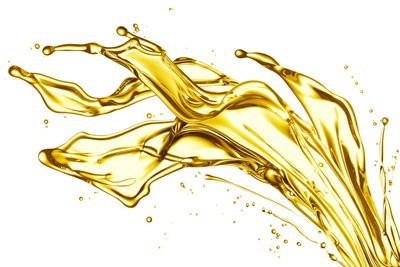 Lubricant oil is then divided into 5 base oil groups according to saturate and sulfur percentage, viscosity index, temperature rating, and other things that confuse me. At the end of the refinement process each of these groups are referred to something called base stock.
Base stock is a pure mineral oil without any additives and is the key ingredient for any oil recipe. The higher the quality a base stock is the better the lubrication value, viscosity index, and integration with additives. And, just like with many other forms of merchandise such as wine, caviar, or prostitutes, higher quality usually dictates a higher price. Base stock is up for grabs on the open market and any quality is available to every oil manufacturer. At this point an oil can begin to be judged for its quality. And argued about.
Once a company chooses a base stock as a platform for their oil, they introduce additives such as moly, frictional modifiers, detergents, anti-oxidants, anti-foaming agents, eye of newt, lizard legs, dash of Tabasco or other ingredients that are unique to their brand. Even though each type of oil will meet the same specifications and have many of the same additives (like anti-oxidants or detergents) the quality and percentage of each additive can vary greatly by brand. The balance of these percentages can, in turn, affect how an oil performs in specific applications.
Additives and formulas aren’t the only thing unique to each brand of oil. The manufacturing process can also be very different between companies. Not only are there different techniques for incorporating the additives into the oil, but production quantity varies too – some brands produce huge amounts for mass markets, others make only small batches to improve quality control.
Lubricant oil is then divided into 5 base oil groups according to saturate and sulfur percentage, viscosity index, temperature rating, and other things that confuse me. At the end of the refinement process each of these groups are referred to something called base stock.
Base stock is a pure mineral oil without any additives and is the key ingredient for any oil recipe. The higher the quality a base stock is the better the lubrication value, viscosity index, and integration with additives. And, just like with many other forms of merchandise such as wine, caviar, or prostitutes, higher quality usually dictates a higher price. Base stock is up for grabs on the open market and any quality is available to every oil manufacturer. At this point an oil can begin to be judged for its quality. And argued about.
Once a company chooses a base stock as a platform for their oil, they introduce additives such as moly, frictional modifiers, detergents, anti-oxidants, anti-foaming agents, eye of newt, lizard legs, dash of Tabasco or other ingredients that are unique to their brand. Even though each type of oil will meet the same specifications and have many of the same additives (like anti-oxidants or detergents) the quality and percentage of each additive can vary greatly by brand. The balance of these percentages can, in turn, affect how an oil performs in specific applications.
Additives and formulas aren’t the only thing unique to each brand of oil. The manufacturing process can also be very different between companies. Not only are there different techniques for incorporating the additives into the oil, but production quantity varies too – some brands produce huge amounts for mass markets, others make only small batches to improve quality control.
While additives are introduced during the manufacturing process, a bit of collusion tends to be introduced in the marketing process, particularly in the automotive world. Many auto parts store brands (NAPA, O’Reilly’s, Auto Zone) are all the exact same oil produced by Valvoline. Oils marketed for high mileage vehicles can contain the same exact additives as any other oil, albeit at different percentages. And nowhere is marketing sleight of hand more evident than with synthetic oil.
Synthetic and para-synthetic oil is manufactured through the same basic steps as 100% petroleum-based oil, with different additives introduced into different qualities of base stock at different percentages. But thanks to legalities, there’s a magic number that allows companies to alter hydrocarbon molecules just enough or add the minimum amount of synthetic compounds (often referred to as ‘the golden drop’ in PAO Synthetics) to have an oil classified as synthetic. Think of it in terms of being just over the legal limit, like a DUI. Just because you qualify to meet the minimum requirement of being legally intoxicated doesn’t mean you drank a fifth of Sailor Jerry’s Spiced Rum. Which, by the way, is excellent when mixed with lemonade and served on a hot summer day. Anyway, once an oil is classified as a synthetic it can then be marketed as such and priced accordingly. Furthermore, marketing also plays a huge role in brand loyalty, which tends to be a hand-me-down that’s passed around between family and friends. Opinions can become as strong as religious convictions based solely on the fact that Great Uncle Beauford used Acme Lubricants for thirty years without having a single engine explode. Never mind that he only drove 800 miles per year and never went over 30mph. Or maybe they knew someone who splurged for expensive synthetic oil for their Yugo and it still broke down. Go figure. Which is really what it boils down to for any brand of oil, isn’t it? Price. Nobody ever complains that something is too inexpensive. Cheap maybe, but not inexpensive. The overwhelming majority of oil end users select the lowest cost product they can find (regardless of type) that meets required specifications. Since this is a Dual Sport Motorcycle based website and I tend to have a single track (ahem) mind, I’ll focus on how I view oil specifications and prices as an end user in the two wheeled world. The integrated component design of a motorcycle is idiotic at best. Having the engine, clutch, and transmission all combined as a single entity that shares lubrication makes no sense to me at all. In an automotive application these components are segregated and use drastically different types of oil (except the clutch, which is dry). Automotive engine oil is changed exponentially more frequently than the tranny oil. Having these two main components share lubrication with a wet clutch on a motorcycle that’s used primarily in a off-road environment (more dirt please!) means that I want an oil that doesn’t just meet minimum specifications, I want one that exceeds them. Because of this I’m willing to pay out a few more dollars for a high quality, high performance oil that provides good protection against shock loading and is less susceptible to shearing. However, this doesn’t mean I want to pay more to fund someone’s race team. While I do enjoy watching many different forms of motor sport racing, I understand how astronomically expensive it is to support a professional team. Oil manufacturers don’t sponsor teams at the expense of their profit margins, they simply pass the cost on to the consumer. The more successful the team is, the more in demand their product becomes and the more they can charge for it. But it doesn’t necessarily mean it’s better oil. While the higher cost of a racing oil does not guarantee high quality, in a motorcycle application it can be preferable to regular engine oil. Close the blinds, turn up the TV to compromise electronic listening devices, and strap on your tin foil hat because its time to bitch about the government. Stringent automotive emission requirements from the government have caused many engine oil formulas to focus more on catalytic converter performance and long-term emission compliance. The result is a reduction or elimination of some key ingredients such as anti-wear additives like ZDDP. Racing oil is formulated with higher percentages of additives and without regard to emissions. Kind of like Jolt Cola – all the sugar and twice the caffeine. Which, coincidentally, mixes well with Sailor Jerry’s Spiced Rum. Since I have bounced back and forth between generalizations in automotive and motorcycle oils, I should probably reign in my ADD long enough to be vaguely more specific about the differences between those two types of oil. Motorcycle oil has a higher percentage of certain additives and a lower percentage of others. Many believe the higher quantity of frictional modifiers used in energy conserving automotive oils will cause a wet clutch to slip when used in a motorcycle application. Others vehemently disagree. Which side is right? Probably both – Soluble Moly requires friction, heat, and pressure between two metal surfaces to cause slippage. Since it won’t adhere to clutch plates it won’t cause problems. But different oils with different additives used in different bikes by different riders in different conditions will inevitably produce different results. And different opinions. Energy conserving oil does tend to lack a lot of additives to appease government standards. In other words, the government is concerned about emissions, not your engine. The real question in all of this is what’s the best motorcycle engine oil? I have no idea. Nobody else does either, hence all the arguing. What I do know is that we can come close to finding the best personal choice of oil with a relatively simple algorithm. By researching and comparing technical data (like oil analysis), evaluating what type of rider you are and what kind of performance you demand from your engine, then cross referencing these findings with how much money you’re willing to pay to insure the longevity of your machine, it will usually narrow it down to a game of rock, paper, scissors. Or an over the shoulder dart toss. If taking all these factors into consideration seems too time consuming for you consider this: most of us spent a lot of time and effort studying technical specifications on motorcycles before purchasing one. The oil you pour into the engine (and tranny and clutch) is its life blood. You didn’t buy your bike on a whim – don’t maintain it on one. So if your quest to find the best engine oil for your motorcycle has only led to confusing arguments and a migraine, maybe you’re just looking in the wrong areas. The answers won’t be found on forums, race team logos, or the price tag. Get it through your hard head that it comes down to two things – hard data and hard currency. Find a good quality oil that you believe in at a price point you’re comfortable with; then change it regularly and stay out of the argument!
So if your quest to find the best engine oil for your motorcycle has only led to confusing arguments and a migraine, maybe you’re just looking in the wrong areas. The answers won’t be found on forums, race team logos, or the price tag. Get it through your hard head that it comes down to two things – hard data and hard currency. Find a good quality oil that you believe in at a price point you’re comfortable with; then change it regularly and stay out of the argument!
